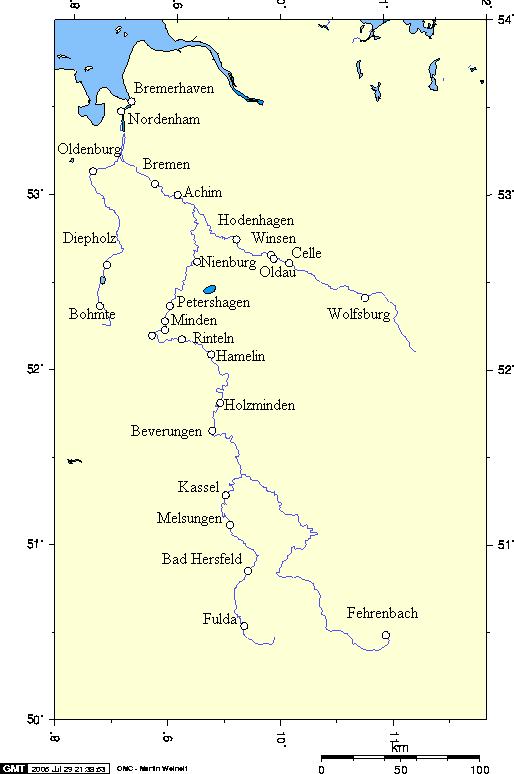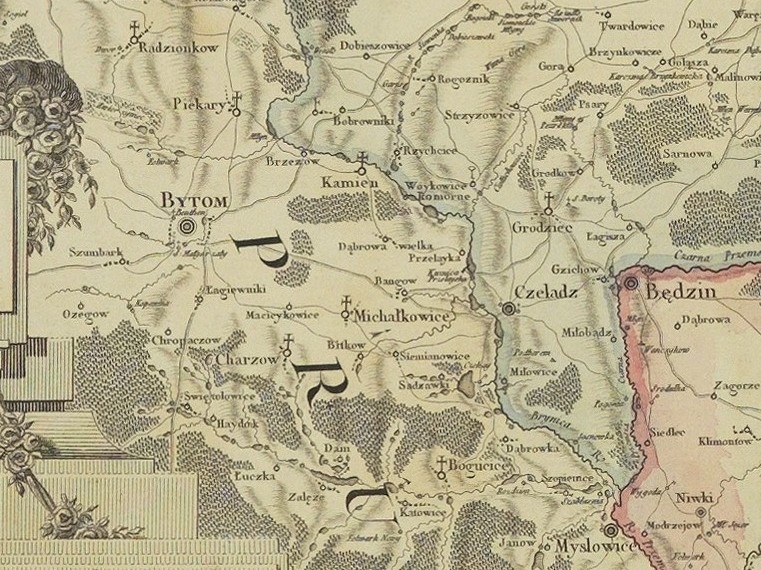|
Friedrich Wilhelm Von Reden
Friedrich Wilhelm von Reden (23 March 1752 – 3 July 1815) was a German pioneer in mining and metallurgy. He was born in Hamelin in the Electorate of Hanover and died in Bukowiec, Jelenia Góra County, Schloss Buchwald in Kingdom of Prussia, Prussian Province of Silesia, Silesia. Life Reden came from the noble family of :de:Reden (Adelsgeschlecht), Reden, in which mining was a long-standing interest. He was the nephew of the Hanoverian ''Berghauptmann'' Claus Friedrich von Reden, as well as of Friedrich Anton von Heynitz, a reformer of Prussian mining and metallurgy. One of his cousins was the leading American mountain man Friedrich Otto Burchard von Reden. In 1768 Reden began an apprenticeship at various mines of the Oberharz. Between 1770 and 1773 he was a student at Göttingen and at Halle (Saale), Halle. After passing the civil service examination to become an administrative officer, he travelled through Holland, England, and France, visiting mines and metallurgical ... [...More Info...] [...Related Items...] OR: [Wikipedia] [Google] [Baidu] |
Hamelin
Hamelin ( ; german: Hameln ) is a town on the river Weser in Lower Saxony, Germany. It is the capital of the district of Hamelin-Pyrmont and has a population of roughly 57,000. Hamelin is best known for the tale of the Pied Piper of Hamelin. History Hamelin started with a monastery, which was founded as early as 851 AD. A village grew in the neighbourhood and had become a town by the 12th century. The incident with the "Pied Piper" (see below) is said to have happened in 1284 and may be based on a true event, although somewhat different from the tale. In the 15th and 16th centuries Hamelin was a minor member of the Hanseatic League. In June 1634, during the Thirty Years' War, Lothar Dietrich, Freiherr of Bönninghausen, a General with the Imperial Army, lost the Battle of Oldendorf to the Swedish General Kniphausen, after Hamelin had been besieged by the Swedish army. The era of the town's greatest prosperity began in 1664, when Hamelin became a fortified border town of ... [...More Info...] [...Related Items...] OR: [Wikipedia] [Google] [Baidu] |
Geology
Geology () is a branch of natural science concerned with Earth and other astronomical objects, the features or rocks of which it is composed, and the processes by which they change over time. Modern geology significantly overlaps all other Earth sciences, including hydrology, and so is treated as one major aspect of integrated Earth system science and planetary science. Geology describes the structure of the Earth on and beneath its surface, and the processes that have shaped that structure. It also provides tools to determine the relative and absolute ages of rocks found in a given location, and also to describe the histories of those rocks. By combining these tools, geologists are able to chronicle the geological history of the Earth as a whole, and also to demonstrate the age of the Earth. Geology provides the primary evidence for plate tectonics, the evolutionary history of life, and the Earth's past climates. Geologists broadly study the properties and processes of ... [...More Info...] [...Related Items...] OR: [Wikipedia] [Google] [Baidu] |
Friedrich Adolf Riedesel
Freiherr Friedrich Adolf Riedesel Freiherr zu Eisenbach (3 June 1738 in Lauterbach/Hesse – 6 January 1800 in Braunschweig) was a German officer who served in the Seven Years' War and American War of Independence. He was the commander of the ''Braunschweiger Jäger'', a regiment of soldiers from the Principality of Brunswick-Wolfenbüttel that was among the German units hired by the British during the American War of Independence. He then commanded all German soldiers in the Saratoga Campaign. Biography Early career Friedrich Adolf was born in Lauterbach, Hesse, into the Riedesel family of Hessian Uradel barons, the second son of Johann Wilhelm Riedesel, Freiherr zu Eisenbach (1705-1782) and Sophia von Borcke (1705-1769). His birth on June 3, 1738 and early education both took place in Lauterbach. The title of "Freiherr" (Baron) was carried by all men of his lineage who reached majority. His parents disagreed about his education; his mother wanted him prepared for ... [...More Info...] [...Related Items...] OR: [Wikipedia] [Google] [Baidu] |
Friederike Von Reden
Friederike von Reden (1774-1854), was a German noblewoman, philanthropist and salon-holder. She is known as the ''Mutter des Hirschberger Tales''. Early life She was born as the daughter of Baron Friedrich Adolf Richard Riedesel zu Eisenbach (1738-1800) and his wife, Friederike Charlotte Louise von Massow (1746-1808). Biography She married minister Friedrich Wilhelm von Reden in 1802. After being widowed in 1815, she became a significant philanthropist. She founded the bible society Buchwalder Bibelgesellschaft, whose president she was. She founded a number of charitable societies active in Silesia. She also hosted a literary salon in her home, , which became a center of the Silesia Silesia (, also , ) is a historical region of Central Europe that lies mostly within Poland, with small parts in the Czech Republic and Germany. Its area is approximately , and the population is estimated at around 8,000,000. Silesia is spli ...n aristocracy. References kulturportal-west ... [...More Info...] [...Related Items...] OR: [Wikipedia] [Google] [Baidu] |
Frederick William III
Frederick William III (german: Friedrich Wilhelm III.; 3 August 1770 – 7 June 1840) was King of Prussia from 16 November 1797 until his death in 1840. He was concurrently Elector of Brandenburg in the Holy Roman Empire until 6 August 1806, when the Empire was dissolved. Frederick William III ruled Prussia during the difficult times of the Napoleonic Wars. The king reluctantly joined the coalition against Napoleon in the . Following Napoleon's defeat, he took part in the Congress of Vienna, which assembled to settle the political questions arising from the new, post-Napoleonic order in Europe. His primary interests were internal – the reform of Prussia's Protestant churches. He was determined to unify the Protestant churches to homogenize their liturgy, organization, and architecture. The long-term goal was to have fully centralized royal control of all the Protestant churches in the Prussian Union of Churches. The king was said to be extremely shy and indecisive. His wife ... [...More Info...] [...Related Items...] OR: [Wikipedia] [Google] [Baidu] |
Frederick William II Of Prussia
Frederick William II (german: Friedrich Wilhelm II.; 25 September 1744 – 16 November 1797) was King of Prussia from 1786 until his death in 1797. He was in personal union the Prince-elector of Brandenburg and (via the Orange-Nassau inheritance of his grandfather) sovereign prince of the Canton of Neuchâtel. Pleasure-loving and indolent, he is seen as the antithesis to his predecessor, Frederick the Great. (Frederick II). Under his reign, Prussia was weakened internally and externally, and he failed to deal adequately with the challenges to the existing order posed by the French Revolution. His religious policies were directed against the Enlightenment and aimed at restoring a traditional Protestantism. However, he was a patron of the arts and responsible for the construction of some notable buildings, among them the Brandenburg Gate in Berlin. Haydn, Mozart and Beethoven all dedicated works to him. Early life Frederick William was born in Berlin, the son of Prince Aug ... [...More Info...] [...Related Items...] OR: [Wikipedia] [Google] [Baidu] |
Chorzów
Chorzów ( ; ; german: link=no, Königshütte ; szl, Chorzōw) is a city in the Silesia region of southern Poland, near Katowice. Chorzów is one of the central cities of the Upper Silesian Metropolitan Union – a metropolis with a population of 2 million. It is located in the Silesian Highlands, on the Rawa River (a tributary of the Vistula). Administratively, Chorzów is in the Silesian Voivodeship since 1999, previously Katowice Voivodeship, and before then, the Silesian Voivodeship. Chorzów is one of the cities of the 2.7 million conurbation – the Katowice urban area and within a greater Silesian metropolitan area with the population of about 5,294,000 people. The population within the city limits is 105,628 as of December 2021. History City name The city of Chorzów was formed in 1934–1939 by a merger of 4 adjacent cities: Chorzów, Królewska Huta, Nowe Hajduki and Hajduki Wielkie. The name of the oldest settlement ''Chorzów'' was applied to the amalgamat ... [...More Info...] [...Related Items...] OR: [Wikipedia] [Google] [Baidu] |
Gliwice
Gliwice (; german: Gleiwitz) is a city in Upper Silesia, in southern Poland. The city is located in the Silesian Highlands, on the Kłodnica river (a tributary of the Oder). It lies approximately 25 km west from Katowice, the regional capital of the Silesian Voivodeship. Gliwice is the westernmost city of the Upper Silesian metropolis, a conurbation of 2.0 million people, and is the third-largest city of this area, with 175,102 permanent residents as of 2021. It also lies within the larger Upper Silesian metropolitan area which has a population of about 5.3 million people and spans across most of eastern Upper Silesia, western Lesser Poland and the Moravian-Silesian Region in the Czech Republic. Gliwice is bordered by three other cities and towns of the metropolitan area: Zabrze, Knurów and Pyskowice. It is one of the major college towns in Poland, thanks to the Silesian University of Technology, which was founded in 1945 by academics of Lwów University of Technology. ... [...More Info...] [...Related Items...] OR: [Wikipedia] [Google] [Baidu] |
Coke (fuel)
Coke is a grey, hard, and porous coal-based fuel with a high carbon content and few impurities, made by heating coal or oil in the absence of air—a destructive distillation process. It is an important industrial product, used mainly in iron ore smelting, but also as a fuel in stoves and forges when air pollution is a concern. The unqualified term "coke" usually refers to the product derived from low-ash and low-sulphur bituminous coal by a process called coking. A similar product called petroleum coke, or pet coke, is obtained from crude oil in oil refineries. Coke may also be formed naturally by geologic processes.B. Kwiecińska and H. I. Petersen (2004): "Graphite, semi-graphite, natural coke, and natural char classification — ICCP system". ''International Journal of Coal Geology'', volume 57, issue 2, pages 99-116. History China Historical sources dating to the 4th century describe the production of coke in ancient China. The Chinese first used coke for hea ... [...More Info...] [...Related Items...] OR: [Wikipedia] [Google] [Baidu] |
John Baildon
John Baildon (11 December 1772 – 7 August 1846) was a Scottish pioneer in metallurgy in continental Europe. Baildon was born in Larbert, Stirlingshire. In 1793, he came to Prussian Silesia (in modern-day Upper Silesia, Poland) on the invitation of Friedrich von Reden. During the remainder of his life in Silesia, Baildon was involved in numerous pioneering industrial undertakings, including construction of the first blast furnaces fired by coke in continental Europe (in Gliwice (Gleiwitz) and Chorzów (Königshütte), the first pig iron produced on 21 September 1796), the Kanał Kłodnicki (Klodnitz Canal), and the first iron bridge in continental Europe (over the Strzegomka river in Łażany (Laasan), Lower Silesia, erected in Spring 1796). John married Helene Antonie Galli, daughter of an Italian merchant, in Gleiwitz in 1804 and had 7 children (5 sons, 2 daughters). He died in Gleiwitz and is buried there at the Metallurgical Cemetery, known as the ''Cmentarz Hutnic ... [...More Info...] [...Related Items...] OR: [Wikipedia] [Google] [Baidu] |



_crop.jpg)


